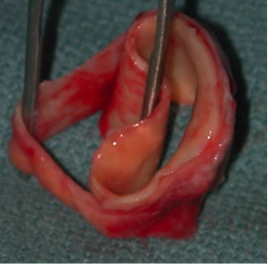Acute Aortic Dissections: 'It's Complicated'
Continuing on with the theme of acute Aortic dissections, let’s discuss in more detail the ramifications and consequences of blood simultaneously flowing in two separate, parallel channels within the Aorta. The double barrel appearance (in cross section) of the aorta means that the physiologic pressure of the of a single channel of flowing blood in the normal Aorta becomes divided. In fact, there becomes a pressure differential between the two channels. One channel, the true lumen, is compressed by the increased pressure in the false lumen. The false lumen is the space created by the tearing apart of the layers of the wall of the aorta. As a consequence, blood flow to the side branches of the Aorta can be affected.

Its complicated. Acute Aortic dissections are classified as complicated or uncomplicated based on a number of factors. A complicated Aortic dissection refers to decreased or lack of blood flow to a branch vessel which is being occluded by the septum (layer of tissue separating the true and false lumens). The septum can plug and prevent blood from entering the side branch. If this occurs, the organs depending on this blood flow could be permanently damaged and lead to death. Another sign of a complicated Aortic dissection is uncontrolled blood pressure. When people suffer an acute Aortic dissection, they are always admitted to the intensive care unit for close monitoring and observation. The blood pressure is frequently elevated and is sometimes difficult to control. If this is the case, this satisfies the requirement of a complicated Aortic dissection. Rupture of the Aortic is another manifestation of a complicated Aortic dissection.
An uncomplicated Aortic dissection implies that there are no signs of malperfusion to a branch vessel, the blood pressure is controlled, the patient’s back and chest pain are able to be controlled and there are no signs of rupture such as internal bleeding.
The management of complicated and acute uncomplicated Aortic dissections are different. We will discuss these differences in future posts. Additionally, we will discuss some of the more recent data which suggests that there may not be such a thing as an uncomplicated Aortic dissection. But just remember, either way, its complicated.
Was this post informative?
Subscribe to my newsletter to learn more about the aorta, its diseases, and how to treat them.
Comments
Share your thoughts below — I try to get back to as many comments as possible.